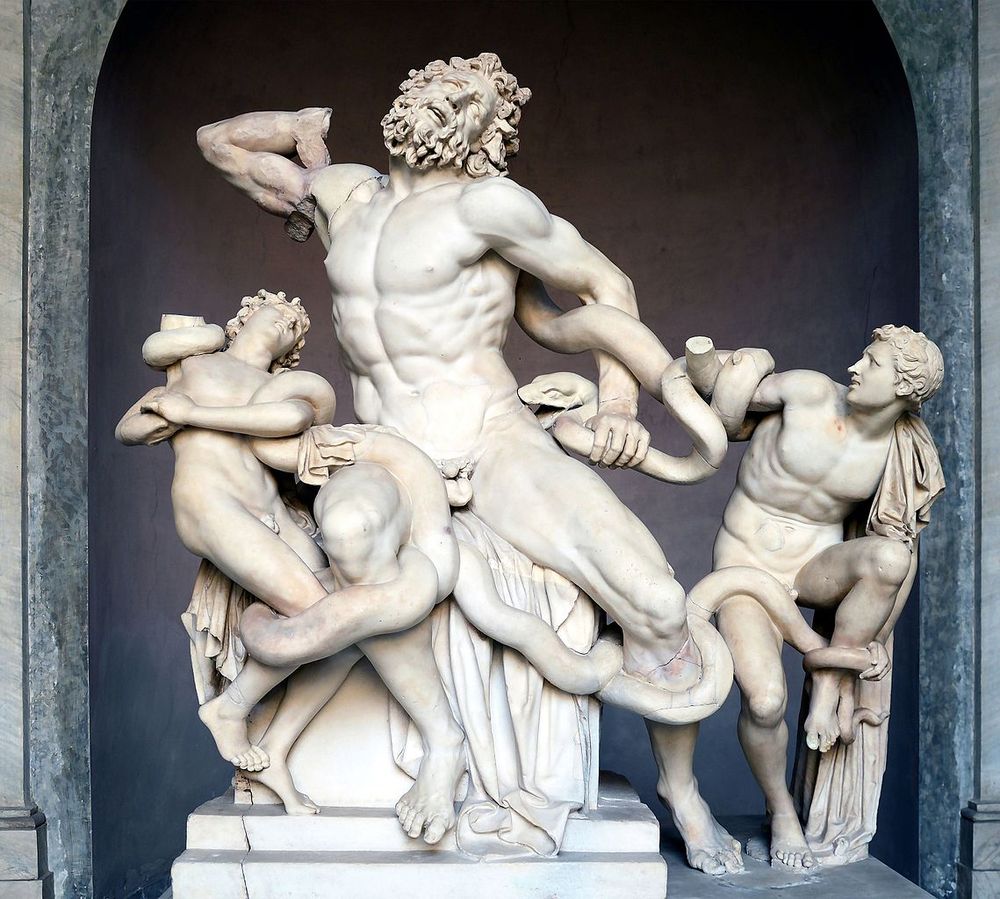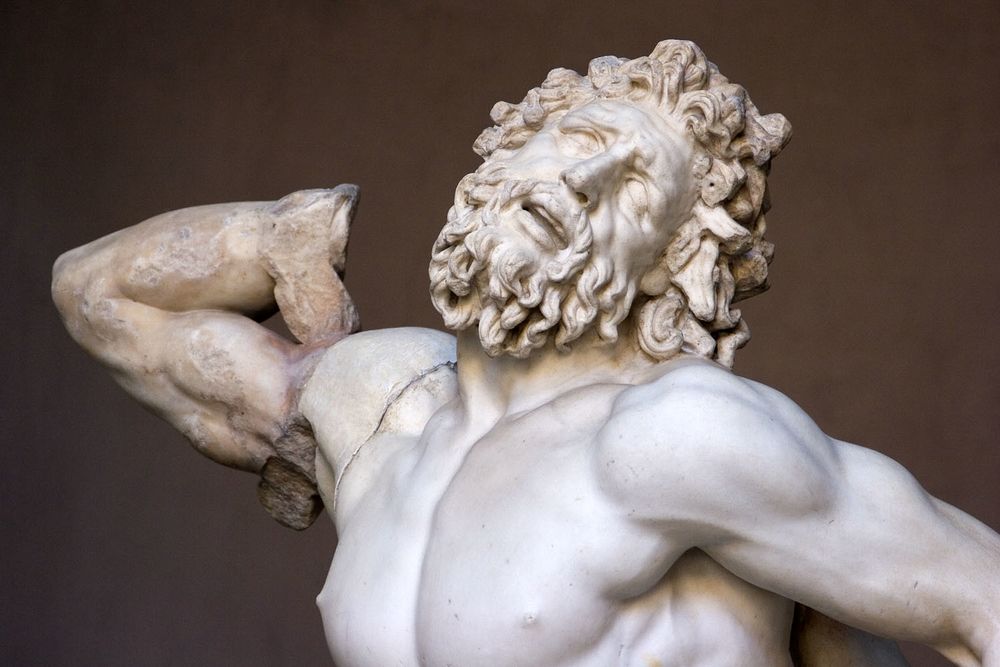The story of Laocoön, the Trojan priest who was attacked and killed along with his two sons by giant serpents for attempting to expose the ruse of the Trojan Horse, is well-known in Greek mythology. Laocoön’s tragic tale has been retold by numerous Greek poets such as Apollodorus and Quintus Smyrnaeus. The latter gave a detailed description of Laocoön's grisly fate in his epic poem Posthomerica. Laocoön was also mentioned by the famous Greek tragedian Sophocles, and by the Roman poet Virgil, whose account is one of the most famous to survive from the Hellenistic period.

Laocoön and His Sons in Vatican Museums, Vatican City. Photo: LivioAndronico/Wikimedia Commons
An even more tangible depiction of Laocoön’s gruesome end, from the same period, is the much-admired marble statue titled Laocoön and His Sons that now stands in Rome’s Vatican Museums. Historians believe that it is the same statue that was praised by Pliny in Natural History. According to this ancient historian and philosopher, the the group of statues were sculpted from a single block of marble (this was later proved to be wrong) by three talented artists. At the center of the sculpture stands the imposing figure of Laocoön; his muscular body straining against the hold of two serpents that have wrapped around his legs and arms. With his left arm the priest has grabbed hold of one serpent, but his efforts to keep the reptile away is in vain. The head of the serpent is poised just over Laocoön’s hips ready to give him a fatal bite. The right arm is bent behind his back, compressed by the coils of the same serpent.
To his right, is his younger son completely enwrapped by the coils of the second serpent. He’s trying to push the head of the serpent away from his body, but the poisonous bite has already been delivered. Under the effect of the toxin that is coursing through his veins, the boy is barely able to stand. His elder brother, on the left, watches in horror and despair as he tries to free his ankle from the tail of the second.

Photo: Sarah/Flickr
When Laocoön and His Sons was discovered in a vineyard under the remains of the Baths of Titus in 1506, Pope Julius II, at once, sent for Michelangelo and the Florentine architect Giuliano da Sangallo to inspect the find. Giuliano da Sangallo immediately identified the statues as the ones lauded by Pliny. While Pliny was right about the magnificence of the execution, the statues were not carved from a single block of marble. However, through the centuries few scholars have doubted that the Laocoön statue group is the same one reported by Pliny.
As with many archeological finds, the Laocoön and His Sons wasn’t found intact. It was missing a few pieces, such as the left arm of the younger son, the older son's right hand, as well as some of the snake's coils. But the most significant missing piece that would lead to much speculation was the priest's right arm.
Pope Julius II wanted to have the missing pieces restored and gave the project to the Vatican architect Donato Bramante, who in turn held a contest to see who could come up with the best version of the arm restoration. Michelangelo suggested that Laocoön’s missing arm should be bent back as if the Trojan priest was trying to rip the serpent off his back. Italian painter and architect, Raphael, who was a distant relative of Bramante, favored an extended arm. In the end, Jacopo Sansovino was declared the winner, whose version with an outstretched arm aligned with Raphael’s own vision of how the statue should look like.

A version of Laocoon and His Sons with an outstretched arm. This copy was made by Baccio Bandinelli of Florence in 1520 to be gifted to Francis I, King of France. It was sent from Rome to Florence in 1531 and put into the courtyard of the Palazzo Medici on Via Larga. It was later moved to the Casino of S. Marco and probably set up in its present position in the Uffizi in 1671. Photo: The Digital Sculpture Project
The statue was eventually repaired in 1532, some two decades later, by Giovanni Antonio Montorsoli, a pupil of Michelangelo, who attached to the statue an even straighter version of Laocoön's outstretched arm. This became the standard version of the sculpture until the twentieth century when, in a strange twist of fate, an antique backward-bent arm was discovered in a Roman workshop in 1906, a few hundred meters from where the statue group had been found four hundred earlier. Ludwig Pollak, the archeologist who found the arm, noted a similarity in the artistic style with the Laocoön group, and suspecting that it was one of the sculpture's lost pieces, presented the broken arm to the Vatican Museums.
The curator tossed the arm into the museum’s storeroom and promptly forgot about it, until it was rediscovered half a century later. The drill holes in the dismembered arm aligned perfectly with its corresponding holes on the statue, leaving no doubt as to where the fragment originally belonged. In 1957, the museum removed Montorsoli's restoration and affixed the bent arm just as Michelangelo had suggested, vindicating the great Italian sculptor’s argument long after he was gone.
References:
# Bernard Frischer, An Annotated Chronology of the “Laocoon” Statue Group, The Digital Sculpture Project
# Stacy Conradt, Why the Laocoön Sculpture Had the Wrong Arm for Four Centuries, Mental Floss
# Monique Webber, Who Says Michelangelo Was Right? Conflicting Visions of the Past in Early Modern Prints, Public Domain Review



Comments
Post a Comment